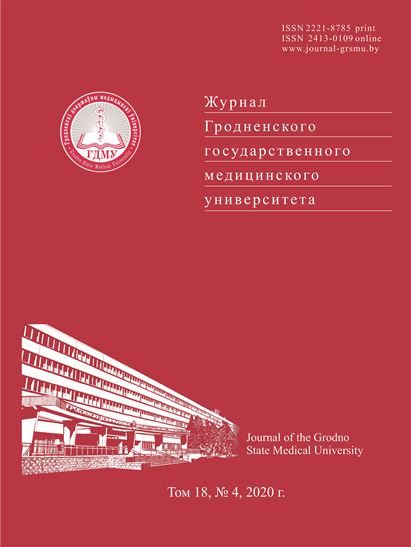СРАВНЕНИЕ РАЗЛИЧНЫХ ВИДОВ ИНТУБАЦИИ ВО ВРЕМЯ РЕАНИМАЦИИ ПАЦИЕНТОВ С COVID-19 БРИГАДОЙ ПАРАМЕДИКОВ В СРЕДСТВАХ ИНДИВИДУАЛЬНОЙ ЗАЩИТЫ

Аннотация
Эндотрахеальная интубация – один из основных методов контроля дыхательных путей во время сердечно-лёгочной реанимации. В эпоху пандемии SARS-CoV-2 медицинский персонал может столкнуться с необходимостью реанимировать инфицированного пациента. Цель. Сравнить три метода интубации трахеи при планируемой реанимации взрослых пациентов с COVID-19, выполняемой парамедиками в средствах индивидуальной защиты (СИЗ) при процедурах генерации аэрозоля (ПГА). Материал и методы. В многоцентровом проспективном рандомизированном перекрестном имитационном исследовании участвовали 32 медработника. Участники в СИЗ при ПГА проводили интубации трахеи с помощью ларингоскопов MAC Macintosh, Airtraq и McGrath у пациента с подозрением на COVID-19 в двух сценариях реанимации. Сценарий A – без сдавливания грудной клетки, сценарий Б – с непрерывными компрессиями грудной клетки. Первичным результатом было время интубации. Результаты. При сценарии A время интубации для соответствующих устройств составило 35 с (IQR: 29-46) против 44 с (IQR: 35-67) против 49 (IQR: 34-72) (p=0,003). Общая эффективность каждого метода интубации составила 100%; однако эффективность первой попытки интубации была самой высокой для McGrath MAC (90,6%), за которым следовали Macintosh (68,1%) и Airtraq 62,5%) (p<0,001). В сценарии B результаты с McGrath MAC были значительно лучше, чем у Macintosh и Airtraq (p<0,05) по всем анализируемым переменным. Выводы. Видеоларингоскоп McGrath MAC предлагает лучшие условия интубации по сравнению с ларингоскопом Macintosh или Airtraq при реанимации взрослых пациентов с COVID-19.
Литература
Sohrabi C, Alsafi Z, O’Neill N, Khan M, Kerwan A, AlJabir A, Iosifidis C, Agha R. World Health Organization declares global emergency: a review of the 2019 novel coronavirus (COVID-19). Int. J. Surg. 2020;76:71-76. https://doi.org/10.1016/j.ijsu.2020.02.034.
Li Q, Guan X, Wu P, Wang X, Zhou L, Tong Y, Ren R, Leung KSM, Lau EHY, Wong JY, Xing X, Xiang N, Wu Y, Li C, Chen Q, Li D, Liu T, Zhao J, Liu M, Tu W, Chen C, Jin L, Yang R, Wang Q, Zhou S, et al. Early transmission dynamics in Wuhan, China, of novel coronavirus-infected pneumonia. N. Engl. J. Med. 2020;382:1199-1207. https://doi.org/10.1056/NEJMoa2001316.
Ong SWX, Tan YK, Sutjipto S, Chia P, Young BE, Gum M, Lau SK, Chan M, Vasoo S, Mendis S, Toh BK, Leong J, Barkham T, Peng Ang BS, Tan BH, Leo Y-S, Marimuthu K, Wong MSY, Ng OT. Absence of contamination of personal protective equipment (PPE) by severe acute respiratory syndrome coronavirus 2 (SARS-CoV-2). Infect. Control. Hosp. Epidemiol. 2020;41(5):614-616. https://doi.org/10.1017/ice.2020.91.
Zuo MZ, Huang YG, Ma WH, Xue Z, Zhang J, Gong Y, Che L. Expert recommendations for tracheal intubation in critically ill patients with novel coronavirus disease 2019. Chin. Med. Sci. J. 2020;35(2):105-109. https://doi.org/10.24920/003724.
Brooks SC, Schmicker RH, Cheskes S, Zive D, Morrison LJ. Variability in the initiation of resuscitation attempts by emergency medical services personnel during out-of-hospital cardiac arrest. Resuscitation. 2017;117:102-108. https://doi.org/10.1016/j.resuscitation.2017.06.009.
Soar J, Nolan JP, Böttiger BW, Perkinse GD, Lottg C, Carlih P, Pellisi T, Sandronij C, Skrifvarsk MB, Smithl, Kjetil Sundem GB, Deakino CD. European Resuscitation Council guidelines for resuscitation 2015: Section 3. Adult advanced life support. Resuscitation. 2015;95:100-147. https://doi.org/10.1016/j.resuscitation.2015.07.016.
Link MS, Berkow LC, Kudenchuk PJ, Halperin HR, Hess EP, Moitra VK, Neumar RW, O’Neil BJ, Paxton JH, Silvers SM, White RD, Yannopoulos D, Donnino MW. Part 7: Adult advanced cardiovascular life support: 2015 American Heart Association guidelines update for cardiopulmonary resuscitation and emergency cardiovascular care. Circulation. 2015;132(Suppl 2):S444-S464. https://doi.org/10.1161/CIR.0000000000000261.
Wang PL, Brooks SC. Mechanical versus manual chest compressions for cardiac arrest. Cochrane Database Syst. Rev. 2018;8(CD007260):1-63. https://doi.org/10.1002/14651858.CD007260.pub4.
Ong SWX, Tan YK, Chia PY, Lee TH, Ng OT, Wong MSY, Marimuthu K. Air, surface environmental, and personal protective equipment contamination by severe acute respiratory syndrome coronavirus 2 (SARS-CoV-2) from a symptomatic patient. JAMA. 2020;323(16):1610-1612. https://doi.org/10.1001/jama.2020.3227.
Glosser L. Assessment of endotracheal tube intubation. Review of existing scales. Disaster Emerg. Med. J. 2017;2(2):91-93. https://doi.org/10.5603/DEMJ.2017.0017.
Wang X, Zhang X, He J. Challenges to the system of reserve medical supplies for public health emergencies: reflections on the outbreak of the severe acute respiratory syndrome coronavirus 2 (SARS-CoV-2) epidemic in China. Biosci. Trends. 2020;14(1):3-8. https://doi.org/10.5582/bst.2020.01043.
Huh S. How to train the health personnel for protecting themselves from novel coronavirus (COVID-19) infection during their patient or suspected case care. J. Educ. Eval Health Prof. 2020;17:10. https://doi.org/10.3352/jeehp.2020.17.10.
Yen M-Y, Schwartz J, Chen S-Y, King C-C, Yang G-Y, Hsueh P-R. Interrupting COVID-19 transmission by implementing enhanced traffic control bundling: implications for global prevention and control efforts. J Microbiol. Immunol. Infect. 2020;53(3):1-17. https://doi.org/10.1016/j.jmii.2020.03.011.
Liu M, He P, Liu HG, Wang XJ, Li FJ, Chen S, Lin J, Chen P, Liu JH, Li CH. [Clinical characteristics of 30 medical workers infected with newcoronavirus pneumonia]. ZhonghuaJie He He Hu Xi Za Zhi. 2020;43(3):209214. https://doi.org/10.3760/cma.j.issn.1001-0939.2020.03.014. (Chinese).
Szarpak L. Laryngoscopes for difficult airway scenarios: a comparison of the available devices. Expert. Rev. Med. Devices. 2018;15(9):631-643. https://doi.org/10.1080/17434440.2018.1511423.
Kangelaris KN, Ware LB, Wang CY, Janz DR, Zhuo H, Matthay MA, Calfee CS. Timing of intubation and clinical outcomes in adults with acute respiratory distress syndrome. Crit Care Med. 2016;44(1):120-129. https://doi.org/10.1097/CCM.0000000000001359.
Koo A, Walsh R, Knutson T, Young S, McGrane K, Bothwell J, Grubish L. Comparison of intubation using personal protective equipment and standard uniform in simulated cadaveric models. Mil. Med. 2018;183(Suppl 1):216-218. https://doi.org/10.1093/milmed/usx215.
Grillet G, Marjanovic N, Diverrez JM, Tattevin P, Tadiе J-M, L’Her E. Intensive care medical procedures are more complicated, more stressful, and less comfortable with Ebola personal protective equipment: a simulation study. J. Infect. 2015;71(6):703-706. https://doi.org/10.1016/j.jinf.2015.09.003.
Taylor RS, Pitzer M, Goldman G, Czysz A, Simunich T, Ashurst J. Comparison of intubation devices in level C personal protective equipment: a cadaveric study. Am. J. Emerg. Med. 2018;36(6):922-925. https://doi.org/10.1016/j.ajem.2017.10.047.
Wiechmann W, Toohey S, Majestic C, Boysen-Osborn M. Intubating Ebola patients: technical limitations of extensive personal protective equipment. West. J. Emerg. Med. 2015;16(7):965. https://doi.org/10.5811/westjem.2015.10.28779.
Wang C-C, Chaou C-H, Tseng C-Y, Lin C-C. The effect of personal protective equipment on emergency airway management by emergency physicians: a mannequin study. Eur. J. Emerg. Med. 2016;23(2):124-129. https://doi.org/10.1097/MEJ.0000000000000157.
Shin DH, Choi PC, Na JU, Jun Hwi Cho, Han SK. Utility of the Pentax-AWS in performing tracheal intubation while wearing chemical, biological, radiation and nuclear personal protective equipment: a randomised crossover trial using a manikin. Emerg. Med. J. 2013;30(7):527-531. https://doi.org/10.1136/emermed-2012-201463.
Szarpak L, Madziała M, Smereka J. Comparison of endotracheal intubation performed with 3 devices by paramedics wearing chemical, biological, radiological, and nuclear personal protective equipment. Am. J. Emerg. Med. 2016;34(9):1902-1903. https://doi.org/10.1016/j.ajem.2016.06.101.
Claret PG, Bobbia X, Asencio R, Emilie S, Emmanuelle G, Claire R, Mustapha S, Jean-Emmanuel C. Comparison of the Airtraq laryngoscope versus the conventional Macintosh laryngoscope while wearing CBRN-PPE. Eur. J. Emerg. Med. 2016;23(2):119-123. https://doi.org/10.1097/MEJ.0000000000000220.
Aleksandrowicz S, Czyzewski L, Smereka J, Szarpak, L. Tracheal intubation with a Macintosh laryngoscope with and without chest compressions, performed by nurses. Am. J. Emerg. Med. 2016;34(12):2448-2449. https://doi.org/10.1016/j.ajem.2016.09.016.
Stawicka I, Czyzewski L, Smereka J, Szarpak, L. Comparison of four laryngoscopes for orotracheal intubation by nurses during resuscitation with and without chest compressions: a randomized crossover manikin trial. Disaster Emerg. Med. J. 2016;1(1):14-23. https://doi.org/10.5603/DEMJ.2016.0003.
Szarpak Ł, Karczewska K, Czyżewski Ł, Truszewski Z, Kurowski A. Airtraq laryngoscope versus the conventional Macintosh laryngoscope during pediatric intubation performed by nurses: arandomized crossover manikin study with three airway scenarios. Pediatr. Emerg. Care. 2017;33(11):735-739. https://doi.org/10.1097/PEC.0000000000000741.




























